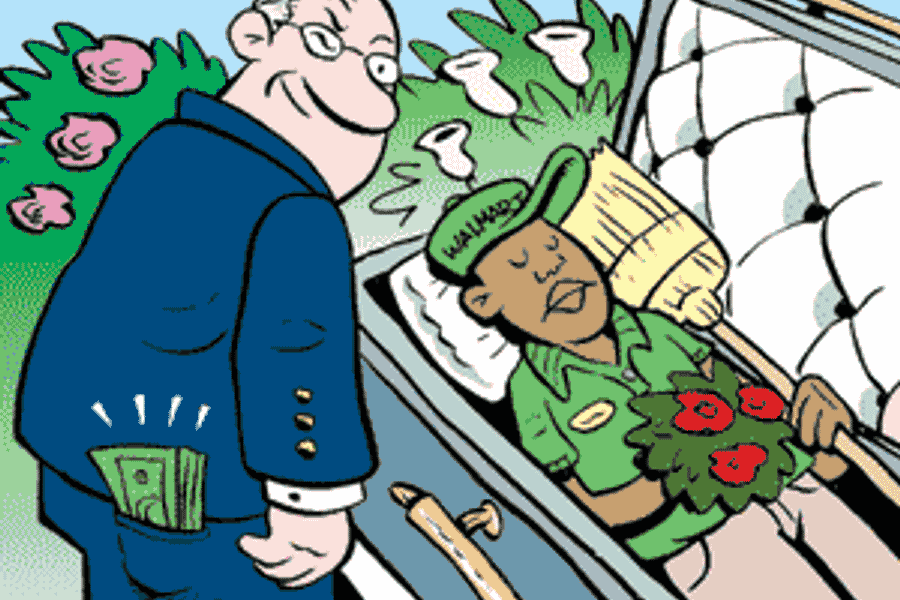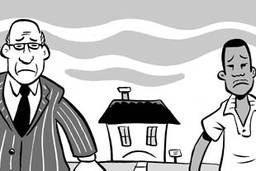
Now lawyers in Texas are mounting a class-action suit against Wal-Mart to reclaim the benefitsas much as $64,000 apiecefor the estates of dead employees. Life insurance policies for employees, sometimes referred to as dead peasant policies, are not uncommon among large U.S. corporations, who use them as a tax dodge. The policies are legal in many states, but not in Texas. According to the Houston Chronicle, 5 to 6 million corporate serfs have life insurance policies held on them by Fortune 500 magnates, and Wal-Mart holds some 350,000.
Heres a kindly tip for all you edgy shutterbugs out there: If youre going to shoot controversial materialdead bodies, saydevelop your own damn film. It is a lesson Thomas Condon, a suburban Cincinnati commercial photographer, will get to mull in the pokey. Condon thoughtlessly dropped off some film he had taken in the Hamilton County Morgue, and his local photo lab dropped a dime to the cops. Now Condons doing two and a half years for gross abuse of a corpse.
Bereaved families were outraged to learn that the mortal remains of their loved ones were posed with props such as sheet music, a key and an apple. Condon argued that he intended to crop the photos to hide the identities of the corpses, and that the pictures were part of a brutally honest artistic project. That cut no ice with Judge Norbert Nadel. Theyre not art, he said of the photos. Theyre sick, theyre disgusting, theyre disrespectful, and really the worst invasion of privacy.
Actually, the worst invasion of privacy may have been carried out by police and prosecutors, who released the photos to the public, and by local television stations, who broadcast them. They didnt care, Condon told Cincinattis City Beat. And theyre calling me reckless.
Another tip: Guns dont kill people. Dipshit gun enthusiasts kill people. Angela Aho, a 20-year-old Minnesota college student, died from a bullet to the head she suffered during a homework photo shoot. According to the St. Paul Pioneer Press, Aho and a fellow student had asked Brett Lessard, 24, a friend (and, coincidentally, the son of a Minnesota state senator), to pose for them. After shooting pictures of Lessard and his dog, Aho wanted something more dramatic. Lessard thought it might be cool to point his Glock handgun at the camera. As he raised his arm, the gun fired a bullet through Ahos eye, killing her.







